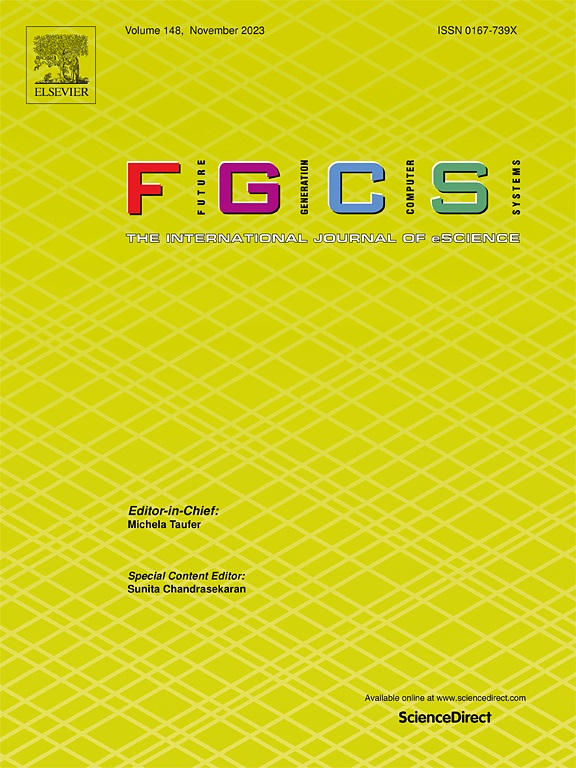基于奇异值分解的轻量级LSTM时间序列预测
IF 6.2
2区 计算机科学
Q1 COMPUTER SCIENCE, THEORY & METHODS
Future Generation Computer Systems-The International Journal of Escience
Pub Date : 2025-05-29
DOI:10.1016/j.future.2025.107910
引用次数: 0
摘要
长短期记忆(LSTM)神经网络以其在许多领域的卓越表现而闻名,特别是在处理时间序列数据和管理长期依赖关系方面。然而,由于内存和计算资源的限制,特别是在边缘计算和实时处理场景中,部署LSTM经常面临挑战。为了最大限度地发挥LSTM在资源受限环境下的优势,本文提出了一种使用权矩阵分解的轻量级LSTM方法。具体来说,它使用奇异值分解(SVD)来分解LSTM Cell和全连接层内的权矩阵。然后,提出了一种优化方法,通过动态评估和调整学习率和权重参数来提高存储和计算效率,从而实现轻量级模型的高效开发。实验结果表明,该方法将LSTM模型的参数减少了45%,将模型尺寸压缩到原始尺寸的45%,并且保持了预测精度而没有下降。这意味着所提出的基于权矩阵分解的方法允许LSTM以更少的计算能力和内存运行,使其更适合部署资源受限的设备。本文章由计算机程序翻译,如有差异,请以英文原文为准。
Singular Value Decomposition-based lightweight LSTM for time series forecasting
Long–short-term memory (LSTM) neural networks are known for their exceptional performance in various domains, particularly in handling time series data and managing long-term dependencies. However, deploying LSTM often faces challenges due to limitations in memory and computational resources, especially in edge computing and real-time processing scenarios. To maximize the advantages of LSTM in resource-constrained environments, this paper presents a lightweight LSTM method that uses weight matrix decomposition. Specifically, it employs Singular Value Decomposition (SVD) to decompose the weight matrices within the LSTM Cell and fully connected layers. Then, an optimization method is addressed to enable the efficient development of a lightweight model by dynamically assessing and enhancing storage and computational efficiency through adjustments of the learning rate and weight parameters. The experimental results indicate that this method reduces the parameters of the LSTM model by 45%, compresses the model size to 45% of its original size, and maintains prediction accuracy without decline. It means that the proposed method based on weight matrix decomposition allows LSTM to operate with less computational power and memory, making them more feasible for deploying resource-constrained devices.
求助全文
通过发布文献求助,成功后即可免费获取论文全文。
去求助
来源期刊
CiteScore
19.90
自引率
2.70%
发文量
376
审稿时长
10.6 months
期刊介绍:
Computing infrastructures and systems are constantly evolving, resulting in increasingly complex and collaborative scientific applications. To cope with these advancements, there is a growing need for collaborative tools that can effectively map, control, and execute these applications.
Furthermore, with the explosion of Big Data, there is a requirement for innovative methods and infrastructures to collect, analyze, and derive meaningful insights from the vast amount of data generated. This necessitates the integration of computational and storage capabilities, databases, sensors, and human collaboration.
Future Generation Computer Systems aims to pioneer advancements in distributed systems, collaborative environments, high-performance computing, and Big Data analytics. It strives to stay at the forefront of developments in grids, clouds, and the Internet of Things (IoT) to effectively address the challenges posed by these wide-area, fully distributed sensing and computing systems.

 求助内容:
求助内容: 应助结果提醒方式:
应助结果提醒方式:


